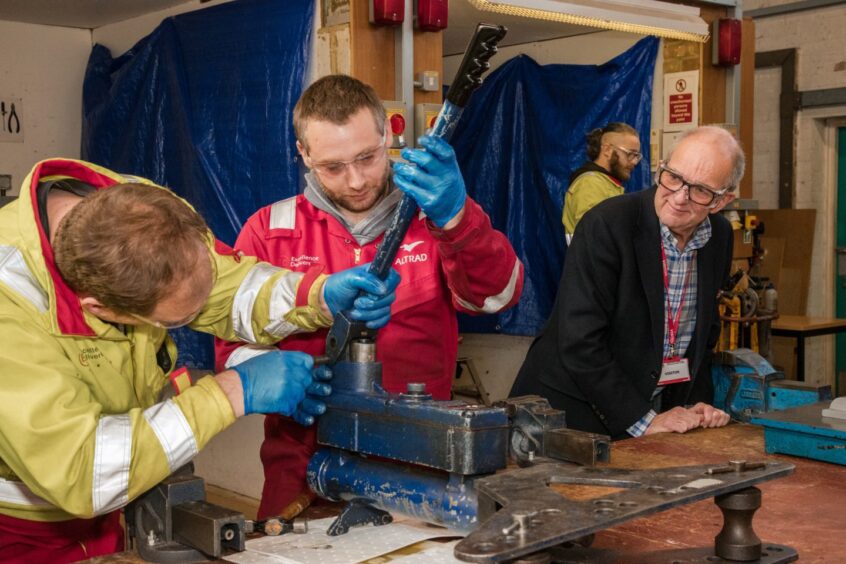
The oil and gas workforce is older than other sectors and it is unlikely that young people will fill the gap left by retirees, according to a new report.
The Engineering Construction Industry Training Board (ECITB) Workforce Census sectoral report found that oil and gas “has the oldest workforce in the industry”.
The trade body collected data across the engineering construction industry (ECI) and has broken it down by sector, with nuclear, renewables, carbon capture storage and others listed alongside oil and gas.
Those over the age of 60 make up 18% of the oil and gas workforce – a 6% increase since the last report in 2021 and a 4% increase when compared to the entire ECI.
Those aged between 16 and 29 make up as little as 12% of the industry, lagging behind the broader industry figure of 17%.
The largest age demographic in oil and gas is people aged between 40 and 49, accounting for a quarter of the workforce, which remains consistent with 2021’s figures and exceeds the wider industry’s reported 23%.
ECITB chief executive Andrew Hockey said: “The report highlights that transitioning the oil and gas workforce into sectors such as renewables, hydrogen, carbon capture and nuclear will be essential to help meet the country’s net-zero commitments.
“However, the age profile of the sector showcased in our report raises concerns about the feasibility of transferring oil and gas workers to these sectors beyond the short term.
“On current trends, it is unlikely the number of younger people joining the sector will grow sufficiently to compensate for those taking retirement in the coming years.”
Previously, the ECITB’s Labour Forecasting Tool predicted that the oil and gas workforce may begin to decline from 2026 and could account for as little as 20% of the ECI workforce by 2035.
According to the latest figures the oil and gas workforce makes up 35.2%, falling just behind nuclear which accounts for 39.2%.
Concerns raised over oil’s ‘ability to transition its workforce’
As the UK edges closer to its energy transition goals, the report raises concerns about whether the ageing workforce will be able to move into other sectors if needed.
The report states: “This demographic profile raises concerns about the sector’s ability to transition its workforce to other sectors in the medium to long term.”
ECITB’s census, published last month, found that 71% of employers across the ECI are experiencing issues with recruitment.
The latest sectoral report has shown what positions are hardest to hire for, they are: “project managers, riggers, platers, pipefitters, design technicians and engineers, electrical engineers, project engineers and subsea engineers.”
Despite concern that the industry will be unable to replace its retiring workforce, employers in the oil and gas sector forecast a 12% uptick in headcount.
However, this growth will be down to “employers securing contracts, many of which are highly competitive,” the report added. The projected increase is also in line with the wider ECI’s predictions.
The scheme aims to train two cohorts of 12 oil and gas or wind workers in Grangemouth and Aberdeen to ensure that they are equipped to work across both sectors.
Hockey added: “Oil and gas work will continue, certainly in the short and medium term and longer term too as decommissioning activity increases. We need to ensure the industry has the skilled workforce it needs to deploy to both existing oil and gas fields as well as onshore and offshore wind.
“This pilot will enable the two-way transition of qualified oil and gas technicians into offshore wind and then back again as and when maintenance activity is needed.”
Renewables sector shows recruitment optimism
This comes as the renewables sector experienced an uptick in its share of the ECI workforce.
Last month’s census found that the sector had experienced a “rapid growth” as its in-scope workforce share has now jumped to 6.2% almost double the share it had in the last report.
This increase in the renewables workforce stands to benefit those working in the sector, ECITB said.
The sector breakdown predicted: “The rapid growth of the renewables sector may naturally drive wages higher, emphasising the importance of facilitating the transition of part of the oil and gas workforce into renewables roles.”
Employers in the renewables sector are among the most optimistic of all those in the ECITB as they predict an 18% increase in headcount between 2024 and 2027, the second largest growth forecast in the report.
Additionally, the renewables workforce is younger than oil and gas with the report stating 22% of the workforce is below 30, 5% higher than the rest of the ECI.
Recommended for you


 © Supplied by ECITB/ Dave Dodge
© Supplied by ECITB/ Dave Dodge © Supplied by RMI
© Supplied by RMI